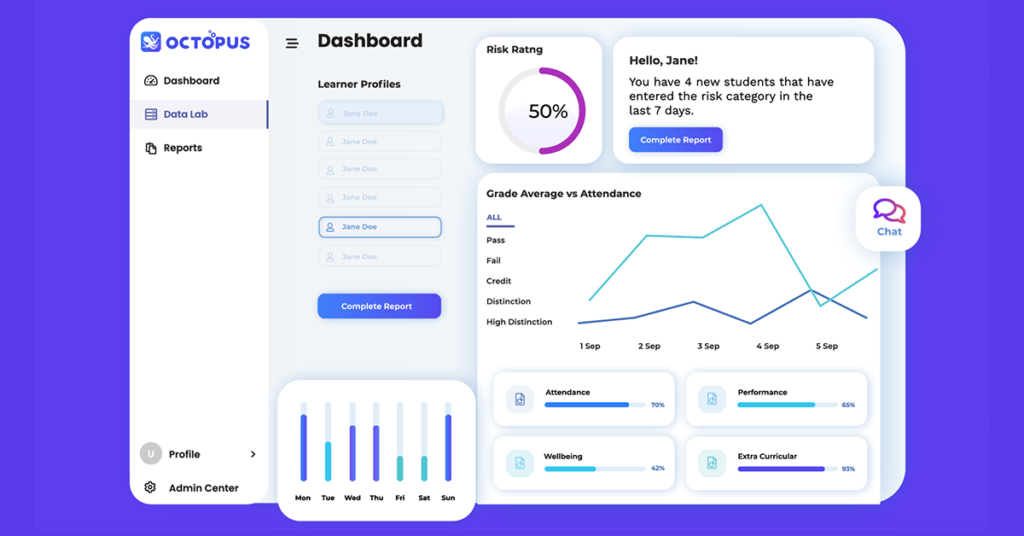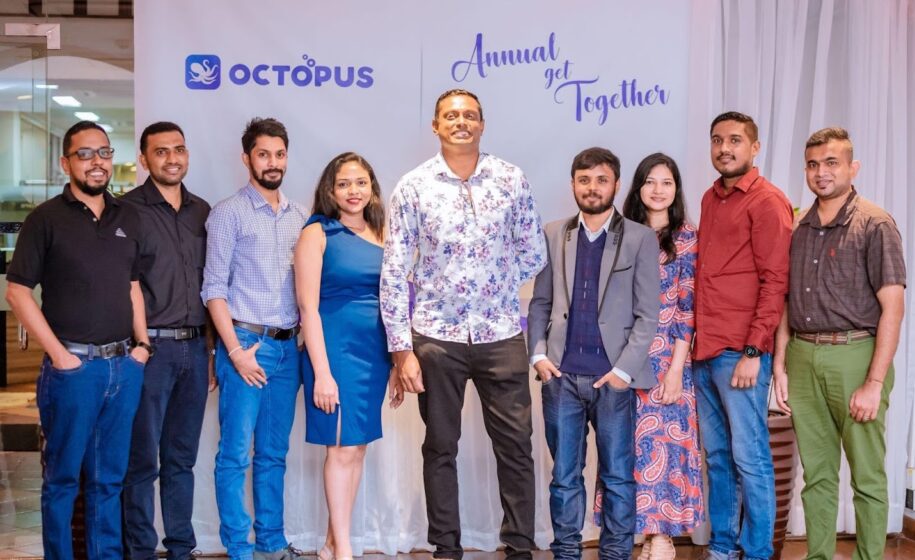As a systems engineer and developer working in the IT department of Sydney’s oldest and most prestigious K-12 schools, I developed a passion for education and how our students will shape our futures.
It was only when I had children of my own that I realised how limited, and limiting, the education technology on offer was for all of the world’s teachers and parents.
In a world where we expect minute by minute notifications on the whereabouts of our takeout pizza, the fact that parents have to wait 3 to 6 months for an update on their child’s development is unacceptable. The fact that teachers, who are so good at engaging and capturing the imaginations of their classrooms, can’t easily track a child’s holistic development across every aspect of their learning, not only test scores, is also unacceptable.
There had to be a better way
When I started Octopus BI, it was originally a consulting company providing solutions to help corporations more easily measure and learn from their data. We assumed schools could plug in and use similar solutions to advance the way they work too. It’s all numbers, right?
But when we took the product to the K-12 market, we realised the requirements were a little more complicated.
In most cases, there are complexities within schools, and unique requirements for the education sector that mean custom tools are necessary. We researched the market, searching and testing, trying to find solutions that would cater to the needs of K-12 schools and their wide networks of teachers, students and parents – but we simply couldn’t find anything that would cover them all.
So we decided to create one ourselves.
The challenges and learnings
It’s always a challenge creating something totally new but my own frustrations, and our market research, confirmed that the demand was, and is, there.
Overcoming technology challenges is a fairly predictable process – you plan and design, code and develop, then test and iterate.
Iterating user behaviours, and developing mindsets, are both a lot more difficult.
The first real challenge was a cultural one: getting schools to agree to have their data stored in the cloud. The sense we got back then was that it was too much of a leap of faith, and that people felt more comfortable with an on-prem solution that would keep it within the school environment.
So we started building an on-prem solution. Together with some amazing developers and a few trusted, patient, early customers, we came up with an MVP.
We learned a lot and made mistakes, but the Octopus BI platform was born. There were a few pivotal moments along the way, especially as we took on more users, and as is the case with many founders starting with just an idea, I’ve had many of my own learnings.
As a small business working with core technologies towards a go-to-market plan, there are time and resource limitations that necessitate strict prioritisation of tasks. I learnt the hard way that I cannot pass on every customer wish to my developers for example. I need to examine and understand what changes or updates are going to be most impactful for the greatest percentage of our users, not just the ones that make the most noise.

Scale doesn’t mean compromise
At one point we had the opportunity to onboard a large consortium of clients at once. We hit a crossroads: we just couldn’t have catered the on-prem solution to them all.
We had to make the transformative decision to transition from on-prem to a cloud solution that could scale with us and our growing clientbase.
Every decision made means a huge difference to the future of a small company like ours, so it wasn’t one I took lightly. To help us determine the right course, for all of our business decisions and especially this one, we consider four key pillars:
- Scalability – Will it stand up for larger groups of institutions in Australia, and indeed, clients in new markets?
- Stability – Can we transition stably, with minimal downtime for our existing customers?
- Performance – Does it improve the performance and ensure our clients are able to get the outcomes they need better?
And the last – arguably the most important for us and our customers:
- Security – Is our customer data going to remain secure and can they continue to rely upon us to prove it?
Recognising this was a non-negotiable for most of our customers, especially those in education, we made key investments early on in the journey – outside of the actual product. We enlisted the help of AWS, who have far better resources and credentials than any other smaller player can hope for.
As a data business, security is one of our biggest risks, so being ISO 27001 qualified is a critical requirement.
The journey continues
Basing our forward path on these four key pillars has led us to where we are today: a fast-growing SaaS platform that is providing business intelligence to improve the way hundreds of educational companies operate, and some corporations too.
Our children are the future. Investing in and optimising their development should be world priority number 1. Schools collect tonnes of data using different systems, platforms and tools, even more since COVID and the boom in digital education.
But when it comes to using it for decision making, it’s hard, overwhelming and simply too time consuming to digest, for anyone – not least, the teachers themselves, who should be in the classroom (virtual or otherwise), armed with tools and insights, but not weighed down by them.
Every business these days is a data business. Octopus BI empowers everyone in the business to gain mastery over the data that matters for them.




